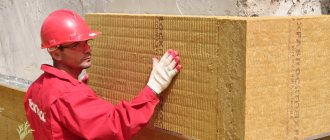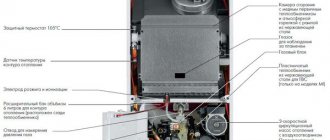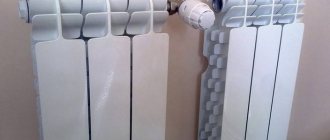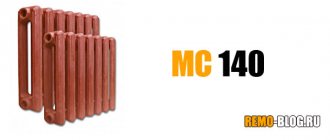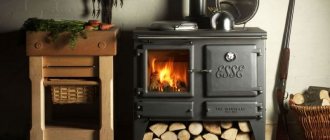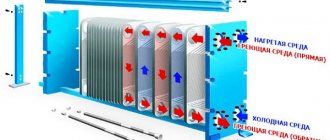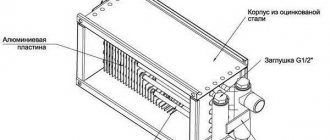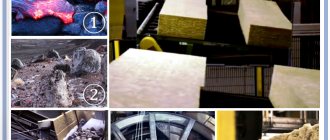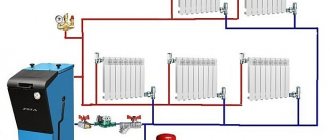Purpose, types of metal heat exchangers
The design and performance of heating devices depend on the purpose, operating principle, and heat exchanger material. For example, it is impossible to create a compact cast iron product for a parapet or wall heater. Since carbon steel or cast iron have significant density, and therefore mass. The old cast iron boilers are a thing of the past. Today, small-sized heating structures with lightweight parts and a higher level of energy transfer are popular. These include gas wall-mounted boilers with a copper heat exchanger.
In the production of thermodynamic structures, materials such as: • copper; • steel of different grades; • cast iron; • aluminum; • silumin.
In modern household heating boilers, most of its surface is occupied by a heat exchange unit. The economic and environmental parameters of the boiler depend on the design and type of material.
Heat exchangers are classified depending on their purpose into such types as heating, cooling, condensing, evaporating. Based on the principle of operation, the blocks are regenerative, recuperative and mixing. The first two types have the common name “thermal surface devices”. Some examples of such units are radiators in cars. Their purpose is to participate in the operation of the engine cooling system. Heated water comes into contact with air through the walls of copper-aluminum heat exchangers.
In mixing (contact) machines, two working streams (hot and cold) are mixed with each other. A similar process is observed in jet condensers, where the sprayed liquid uses condensation energy. They are easier to manufacture and are characterized by increased heat capacity. But the scope of application is limited.
Plate or tubular heat exchanger. What to choose?
No more than 20 years ago the question: whether to choose a tubular or plate heat exchanger did not exist. In most cases, tubular heat exchangers were used. But nothing stands still; over time, more efficient heat exchange equipment has appeared. Plate heat exchangers began to be used to replace tubular heat exchangers. In this article we will try to understand the advantages and disadvantages of both types of heat exchangers.
engineer of Belgorod Heating Networks, Petr Mikhailovich Sizov, will help us . He kindly answered our questions, and we hope these answers will help our customers in choosing the heat exchange equipment they need.
How does the heat exchange process occur in a tubular heat exchanger?
— The heat exchange process in such heat exchangers occurs through the heat transfer surface (the surface of the tubes inside the heat exchanger). The media in the heat exchanger move in two spaces: pipe and inter-tube.
Let's look at an example of heating. The heating fluid from the heat source enters the inter-tube space in which the tubes are located (pipe space). Heated coolant flows through these tubes. The heating coolant passes through the inter-tube space and comes into contact with the surface of the tubes, thus heating the second medium. The media in such a heat exchanger move in countercurrent.
How does a plate heat exchanger work?
— In a plate heat exchanger, the media also exchange heat through a heat transfer surface, which is the heat exchanger plates. When assembled, the plates form a package containing channels. Heating and heated coolants flow through these channels.
Let's look at an example of heating. Conventionally, let’s take one plate as an example. On one side of this plate, heating coolant will flow through the channels. On the other side of the plate, heated coolant will flow. The media move through the channels in countercurrent. In this case, heat exchange occurs between the coolants - one medium heats the other.
What are the strengths and weaknesses of tubular heat exchangers?
Advantages: — Good resistance to water hammer. High pressure performance.
— A small difference in the temperatures of the heating and heated coolant (1C - 2C)
— Less demanding on water quality. But this point is controversial. Because a clogged heat exchanger sharply loses its heat transfer properties.
Flaws:
— Low heat transfer coefficient. The heating efficiency is worse than that of plate heat exchangers.
— Large overall dimensions. Heavy weight and metal consumption of the structure. Requires a large area for installation and a special foundation.
— During repairs, it is not uncommon to plug failed pipes. This reduces the heat transfer surface of the heat exchanger.
— A heat exchanger leak in the pipe space can only be detected when disassembling the heat exchanger
— Washing can only be done in-place. It is most difficult to remove deposits in the heat exchanger tubes, especially when they are heavily overgrown with scale.
— Thermal insulation of the structure is required
— It is impossible to increase the heat transfer surface.
What are the advantages and disadvantages of plate heat exchangers?
Advantages:
— Efficiency 80-85%.
— The heat transfer coefficient is higher than that of a tubular heat exchanger. The heating efficiency is better.
— Compact dimensions and pipes located on one side. This saves space and simplifies equipment installation.
— It is possible to increase the power of the heat exchanger. To do this, you simply need to add plates.
— Simplicity of service. The heat exchanger can be washed in a dismountable manner by 2 people.
- Does not require thermal insulation.
— Reduced pollution. When moving in channels, media reach a high degree of turbulence. This reduces the formation of deposits on the surface of the plates.
Flaws:
— Relatively high hydraulic losses.
— More demanding on water quality than tubular ones.
—
Which equipment is cheaper?
When comparing equipment operating for hot water supply and heating systems, i.e. when used in housing and communal services systems, tubular heat exchangers will be slightly cheaper than plate heat exchangers. But comparing only the purchase price is the wrong method. It is necessary to compare the price and cost of servicing the equipment.
If we compare according to the scheme: purchase price + equipment operating price, then plate heat exchangers clearly win.
Which heat exchangers are easier to maintain?
Due to their collapsible design, plate heat exchangers are easier to maintain. And the efficiency of washing is higher, because with dismountable washing we can visually control the quality of the work performed. All parts in collapsible heat exchangers are easy to replace during repairs.
What is the service life?
It would be more correct to use the term “overhaul period”, i.e. period before major repairs. According to manufacturers, for tubular heat exchangers this period is 5-10 years. Lamellar ones have 10-15 years.
What conclusions need to be drawn?
At the moment, the development of tubular heat exchangers is underway, which in their characteristics are close to plate ones. But the price and maintenance cost of such equipment are not yet known. Therefore, for work in housing and communal services systems, steam systems, and industry, the best choice would be a gasketed plate heat exchanger. If your equipment will operate under conditions of high pressure (more than 25 bar) or high temperature (more than 200C), then you need to pay attention to tubular heat exchangers.
Heating devices made of steel and copper alloys
Since mass production of household appliances is focused on the production of heat exchangers made of ferrous metal, gas boilers with a copper heat exchanger are considered a prestigious product. Copper has high heat transfer characteristics. Therefore, to heat a large house, you can use small boilers with a small amount of coolant. As a result, the devices are very compact.
Important! Buyers are often interested in which heat exchanger to choose – steel or copper. It is necessary to proceed from the physical and chemical properties of ferrous and non-ferrous metals. The specific heat capacity of copper is lower than that of steel.
That is, to heat an equal amount of a substance, copper needs to transfer less heat than steel. Accordingly, the inertia of the heating system, where there is a steel heat transfer unit, is greater. The boiler automation, working with a copper heat transfer block, responds faster to an increase in coolant temperature. This ultimately leads to fuel savings. An even greater reaction of the heating system to heating occurs when the pump is running. In addition, it ensures improved circulation even with broken pipe slopes and prevents water from boiling.
Comparing copper heat exchangers for boilers with steel ones, we can say that the latter are more ductile. This factor is important because there is a constant process of interaction with open fire. As a result, thermal stresses in the metal develop and cracks appear. Steel is more durable in this regard and can withstand a large number of cycles: heating - cooling.
The note! The disadvantages of steel, in addition to inertia and increased specific heat capacity, include: • susceptibility to corrosion; • increased volume of the heater surface; • large amount of coolant; • a significant mass of heating devices.
Steel heat exchanger
A widespread option due to its ease of manufacture and affordable price. Heat exchangers made of steel alloys are ductile, quite durable and resistant to mechanical loads. At the same time, their service life is short due to frequent corrosion processes, and operation requires increased fuel consumption to heat the coolant and maintain normal temperature conditions.
Geyser with copper heat exchanger
The geyser includes a heat exchanger, the water in which is heated by a burner. Copper with a high heat transfer coefficient quickly transfers heat to the water, which is consumed in taking a bath. Copper products work better the less various impurities there are in the alloy. If they are present, the walls of the container heat up unevenly, which causes them to burn out quickly. Sometimes, in order to reduce the price of a copper heat exchanger, the wall thickness and tube diameter are reduced. The weight of the empty device is up to 3.5 kg.
The heat exchange block is made in the form of a tube. In the lower part it has the shape of a snake with ribs. A metal sheet is installed around it, and a spiral pipe is installed on top of it. In addition to copper, galvanized and stainless steel are used. Which heat exchanger is better, copper or stainless steel, is determined by the very fact of the cost of the device. Copper is 20 times more expensive than steel alloy. But it transfers heat better and is more economical in operation. Stainless steel is more durable.
Important! Before you buy a gas water heater with a copper exchanger, you should study its technical parameters. A good thing will not be cheap. Copper oxidizes strongly when in contact with water. This process is especially observed at the point of cold water supply. Condensation forms there. High humidity corrodes the wall of the tube, and fistulas appear. On thin walls they form quickly. Quality products will serve their intended purpose.
The most efficient heat exchanger
Make your own conclusions about which heat exchanger is better and more efficient; my opinion is plate-type – price, durability, efficiency, high efficiency, ease of transportation and installation on an existing facility.
Next is the history of the plate heat exchanger from ancient times to the present day.
If you still have questions, call +7 918-581-18-61 Yuri Olegovich, we will tell you everything about the heat exchangers we supply, calculate the power, select and deliver to the site within 7 calendar days. We will carry out the installation and give a three-year guarantee on the work we perform. Installation will also not take long, it all depends on your conditions.
Repair of copper heat exchangers
During the operation of evaporators, different types of damage occur: • ruptures of tubes at the point of water supply and outlet; • violation of integrity as a result of water hammer; • dents, fistulas; • violation of the tightness of threaded connections.
Before starting repairs, a search is made for microcracks that are not visually noticeable. Hidden defects can only be detected by crimping. Fistulas are eliminated by soldering the copper heat exchanger using high-temperature solders.
To work you will need a soldering iron, flux and solder. First, flux is applied, which cleans the surface of oxidized particles. It also helps distribute the solder evenly. A paste containing copper is used as a flux. If you don’t have it, then you can take rosin and even an aspirin tablet.
The note! When welding a copper heat exchanger, you need the solder to melt from the tube, and not from contact with the soldering iron.
The solder layer at the damage site is gradually increased until its thickness reaches 1-2 mm. The burner flame should be medium, otherwise the evaporator may be damaged further. After finishing soldering, you need to remove the remaining flux. Because the acid contained in its composition corrodes copper.
Which material is preferable: stainless steel or aluminum alloy
What do you and your customers expect from a modern boiler?
- High strength as a guarantee of durability.
- Highest heat transfer for optimal use of energy resources.
- High operational safety and reliability.
- Environmentally friendly.
One of the key points in the development of gas condensing boilers is the selection of the material that will have the greatest number of advantages for the manufacture of the heat exchanger. According to design engineers from the Bosch group of companies, aluminum alloy has the most suitable properties for use in condensing boilers.
Let's take a closer look at them.
Thermal conductivity
The heat transfer coefficient for aluminum is 7 times greater than for stainless steel. This means that aluminum transfers heat better. By using it, you can reduce the heat exchange surface and at the same time transfer the same power to the heating circuit.
Light alloy
Due to its low density, aluminum is 3 times lighter than stainless steel, which makes it possible to design lightweight and compact boilers. This reduces the load on the walls and floor and provides more space for layout in the boiler room.
Aluminum's natural corrosion resistance
Stainless steels contain a large percentage of chromium. When it oxidizes, an oxide layer is formed, very thin (130 angstroms) and impenetrable, which protects the surface from corrosion. Aluminum also reacts to oxidative stress, only aluminum oxide forms a thicker layer than chromium oxide.
However, there may not be enough chromium alloying to form a protective layer, and then the stainless steel will corrode. This can happen for several reasons: contact of ordinary carbon steel with stainless steel (service work should be carried out only with stainless steel tools), changes in the structure of the weld, plastic deformation, etc. None of the above reasons can reduce the corrosion resistance of aluminum, since the protective the Al2O3 film is formed with the main element of the alloy, and not with the alloying additive. In case of damage, it is restored faster and easier, continuing to protect the metal from corrosion.
Mechanical strength under cyclic loads
Metal fatigue is the gradual accumulation of damage under the influence of variable loads in the form of expansion/compression during heating/cooling, which leads to a change in properties, the formation and development of cracks. The ability of aluminum alloys to withstand these repeated and alternating stresses without destruction allows the boiler to be operated with large temperature differences between the supply and return lines, which is especially important during “cold starts”
Environmental friendliness
Heat exchangers made of aluminum alloys do not contain heavy, rare earth metals (Ni, Ti, Mo, Pb), which are alloyed with stainless steels. Therefore, the condensate formed in an aluminum heat exchanger is less aggressive.
Hydraulic resistance
Due to higher water content, aluminum heat exchangers have lower hydraulic resistance. Due to this, they are more hydraulically stable and do not impose requirements on the volume of circulating coolant, which in turn simplifies the selection of circulation pumps.
